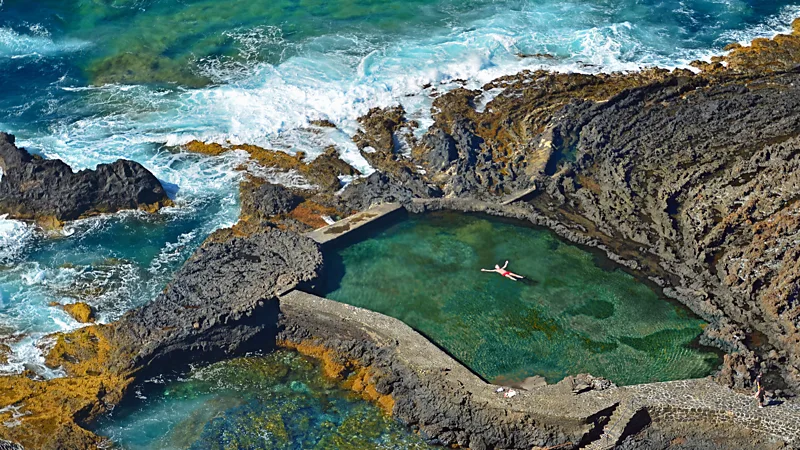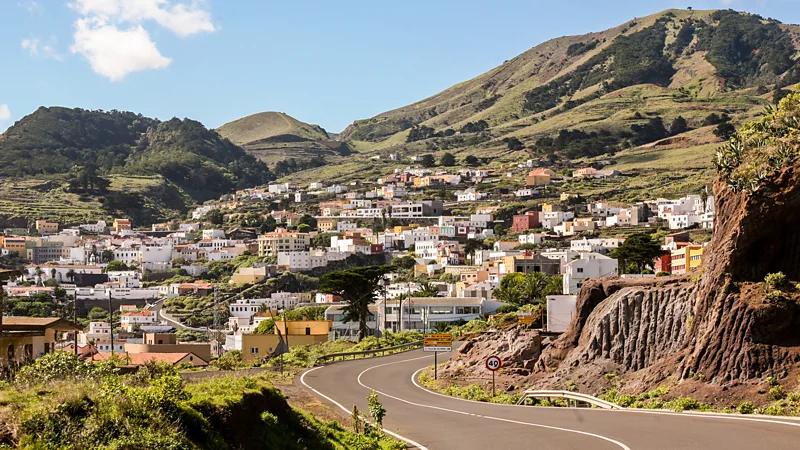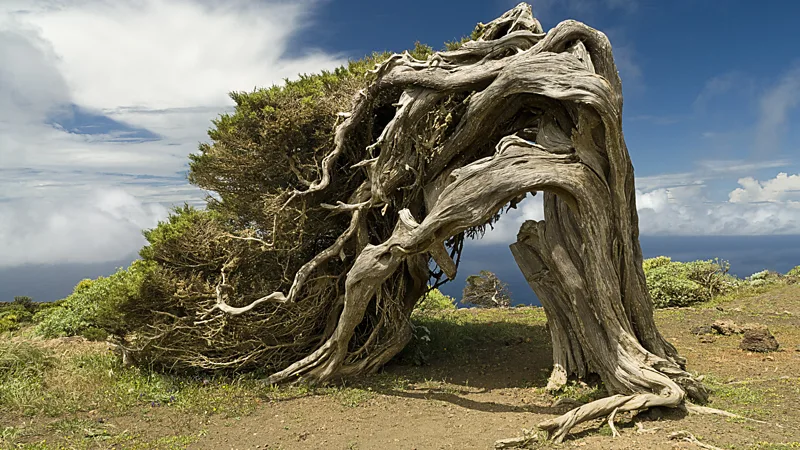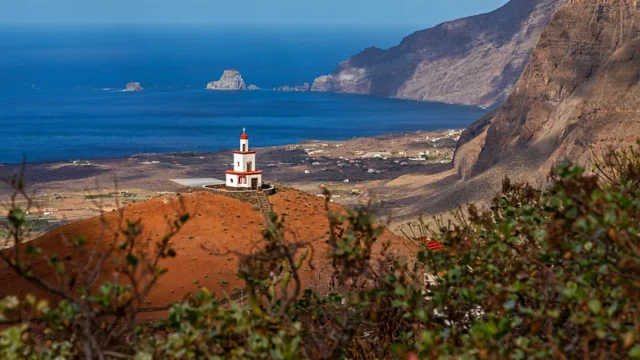Introduction: El Hierro’s Unique Approach to Tourism
While neighboring Canary Islands struggle with the effects of mass tourism, El Hierro, the smallest and most westerly of the archipelago, has quietly charted a different path. Known for its wild landscapes and commitment to sustainable development, El Hierro offers a refreshing alternative to the crowded resorts that dominate other islands.
A Hiker’s Paradise: Discovering El Hierro’s Natural Beauty
During a recent hike on El Hierro, I was struck by the island’s stunning diversity. Within just two hours, I passed through lush forests of ancient laurels, ferns, and lichen-covered branches, climbed volcanic slopes, and stood in awe of the dramatic El Golfo amphitheater. The island’s untouched beauty, with its towering cliffs and rugged coastline, left me breathless.

A Volcanic Legacy: The Formation of El Hierro
El Hierro is the youngest of the Canary Islands, having emerged from the Atlantic Ocean off the coast of Africa around 1.2 million years ago due to undersea volcanic eruptions. This geological activity created a landscape marked by fertile valleys, evergreen forests, and lunar-like volcanic terrains, making El Hierro a place of extraordinary natural wonder.
Escaping the Crowds: El Hierro’s Commitment to Sustainability
Unlike its neighbors, El Hierro has deliberately avoided the pitfalls of mass tourism. With a population of just 11,000, the island’s dramatic topography naturally limits large-scale development. Additionally, the lack of direct flights from outside the Canary Islands means that El Hierro receives only a fraction of the visitors seen by other islands. In 2023, the island welcomed approximately 20,300 visitors, compared to Tenerife’s 6.57 million.
Sustainable Development: Balancing Tourism and Preservation
Since 1997, El Hierro has been committed to a sustainable development plan aimed at gradually increasing tourism while preserving the island’s natural beauty and quality of life for its residents. The island has invested in museums and visitor centers that highlight its culture and traditions, while focusing on low-impact activities and infrastructure improvements that align with its environmental goals.
Exploring El Hierro: What to See and Do
El Hierro offers a variety of activities for nature enthusiasts. With around 270 kilometers of hiking trails, the island is a haven for hikers. Aquatic adventures await in the Mar de las Calmas Marine Reserve, where world-class diving and wild swimming in natural volcanic rock pools provide unique experiences. The island’s trade winds also make it an ideal destination for year-round paragliding.

Discovering El Hierro’s History and Culture
To explore El Hierro’s rich history and culture, visitors can use the El Hierro Pasaporte, which offers reduced entry to the island’s seven museums and visitor centers. One of the most fascinating sites is La Dehesa, a windswept high pasture where ancient juniper trees, shaped by centuries of trade winds, stand as symbols of the island’s resilience.
The Importance of Water: El Hierro’s Innovative Solutions
Water has always been a precious resource on El Hierro, a challenge that has shaped the island’s history and culture. The Ruta del Agua (Water Route) is a 16-kilometer circular trail that highlights the island’s innovative solutions for water collection, from ancient wooden water tanks to the legendary Árbol Garoé, a sacred tree that provided the Bimbache people with all the water they needed.
Gorona del Viento: A Model of Renewable Energy
El Hierro’s commitment to sustainability is perhaps best exemplified by Gorona del Viento, the island’s pioneering wind-pumped hydropower station. Inaugurated in 2014, this innovative facility combines wind power with water power to generate a constant supply of electricity. In 2023, the station made history by operating solely on renewable energy for 24 consecutive days, a feat that saved thousands of tons of CO2 emissions and diesel.
Facing Climate Challenges: The Future of El Hierro’s Energy
However, climate change poses new challenges for Gorona del Viento. In 2023, prolonged periods of calm weather, known as the “calms of September,” resulted in less wind and lower energy production. To address this, El Hierro is working on implementing additional renewable energy sources, such as solar power, to complement its wind and water systems.
El Hierro’s Ambitious Goals: Achieving Net Zero Emissions
El Hierro aims to become the first Spanish destination to achieve net zero emissions. The island’s climate action plan seeks to reduce emissions by 50% by 2030 and achieve zero emissions by 2050. These ambitious goals have earned El Hierro recognition as a leader in sustainability, including the Canary Islands Tourism Award for Sustainable Tourism Destination.

Conclusion: El Hierro’s Legacy of Sustainability
El Hierro’s commitment to sustainability, from its careful approach to tourism to its pioneering renewable energy projects, sets it apart from other destinations. As the island continues to pursue its goals, it serves as a model for how small communities can make a significant impact in the fight against climate change. El Hierro’s wild beauty and innovative spirit ensure that it will remain a place of wonder and inspiration for generations to come.











